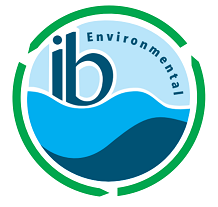What Might New Water Quality Regulations Mean for Utility Finance?
Guest Post by Liudmyla Zapukhliak
Image by Gerd Altmann from Pixabay
Under the Safe Drinking Water Act (SDWA), the Environmental Protection Agency (EPA) sets standards and regulations for the contaminants in public drinking water. The goal is to keep water safe by developing National Primary Drinking Water Regulations (NPDWRs). NPDWRs are required to be revised at least once every six years based on new knowledge of public health threats. To manage this process, the EPA must publish the Contaminant Candidate Lists (CCLs) once every five years and determine which contaminants may require regulation. The last Final CCL 4 was announced on November 17, 2016, and resulted in Final Regulatory Determinations for CCL 4, published on February 22, 2021. In this document, the EPA states that it is “making final determinations to regulate two contaminants, perfluorooctanesulfonic acid (PFOS) and perfluorooctanoic acid (PFOA), in drinking water.” This decision starts the rulemaking process to establish a new NPDWR for these two contaminants to improve public health protection. So, what might these two upcoming rules mean for the finances of your water utility?
What should water utilities expect in the future?
First, water utilities should expect that the two contaminants determined by the CCL 4 (PFOS and PFOA) that are not currently subject to EPA drinking water regulations will be added to the list of regulated substances in the next couple of years. Although regulatory determinations DO NOT impose any requirements on public water systems, right now, utilities will be required to comply with the regulation when/once the EPA establishes the NPDWR - legally-enforceable standards that apply to public water systems - for those contaminants. While developing regulations for the CCL 4 contaminants, the EPA also considers the next Contaminant Candidate List, CCL 5, that includes additional substances to regulate under the SDWA.
In addition to complying with the water quality regulations, water utilities are also required to collect occurrence data on some unregulated substances under the SDWA. For instance, the law requires that EPA issue a list of unregulated contaminants to be monitored by public water systems (PWSs) every five years. The last Unregulated Contaminant Monitoring Rule (UCMR 4) was published in December 2016 and requires water utilities to monitor the occurrence of 30 chemicals in drinking water between 2018 and 2020. The next Rule, UCMR 5, was proposed in March 2021, and it will require water systems serving 3,300 or more people, and a representative sample of smaller water systems, to collect national occurrence data for 29 per- and polyfluoroalkyl substances (PFAS) between 2023 and 2025 to provide EPA with a scientifically valid basis for future actions.
How may new requirements affect water utilities and consumers?
Although regulating contaminants, that based on the latest water safety research may have adverse effects on public health, is a responsibility of the state and federal level agencies, it is the local water utilities that carry the financial burden of complying with the requirements. The increased water treatment and monitoring costs mean higher water bills for the consumers, making water less affordable for the low-income population. In some cases, the financial burden induced by the compliance costs can cause higher public health risks in low-income households than the health risk reduction accomplished by new water quality standards. Thus, the influence of the stricter water quality requirements on public health must be considered together with the affordability of water treatment plans for all the consumers, including the households within the lowest income quintile.
The Safe Drinking Water Act (SDWA) requires the EPA to consider that “there is a meaningful opportunity for health risk reduction through a national drinking water regulation” and also conduct a health risk reduction and cost analysis (HRRCA) in support of any NPDWR. The EPA must consider not only the health effects associated with the contaminant in drinking water but also whether the benefits justify the cost of implementing the new maximum contaminant level. EPA’s current approach on SDWA economic analysis relies on using median household income (MHI) as an affordability metric, which leads to inadequate representation of the relevant population below the median income. Besides, utility size can be a determining factor of financial stress. “Small” water utilities that serve less than 10,000 population (more than 30% of Georgia’s water and wastewater utilities) are more likely to experience stronger financial hardships both based on the emergencies like COVID-19 and due to lack of resources required to implement new EPA regulations.
How to Prepare as a Water Utility
To prepare for the impacts of new drinking water quality regulations, first, ensure that your utility is running efficiently so that you keep costs down. Industry best practices, such as asset management, allow utilities to make informed decisions and provide services in the most efficient and effective way possible. Implementing “customer assistance programs” (CAPs) can help mitigate the low-income households' financial stress. A list of funding sources that water utilities can use to help their low-income customers to deal with increasing water and wastewater rates is discussed in this blog post: How Can Water Utilities Find the Money to Help Their Low-Income Customers? A new (temporary) source of funds to help low-income customers is the Low-Income Household Water Assistance Program (LIHWAP). Finally, utilities should stay informed by monitoring Drinking Water Requirements for States and Public Water Systems, EPA’s website, and consider sharing from your experience on how new rules affect your operations and finances by submitting your comments to the EPA.
This is part of a blog post series funded by the Georgia Environmental Finance Authority (GEFA).
Disclaimer: The opinions of the writers should not be considered legal advice or endorsement by GEFA.
Subscribe Here
Sign up with your email address to receive notices of new blog updates. We post about once per month.
